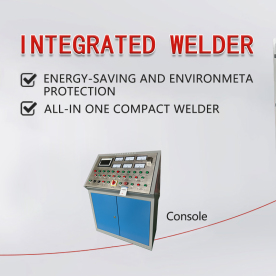[High-speed Pipe making machinery]Revolutionizing Manufacturing: The Role of High-Speed Pipe Making Machinery in Modern Industry and Infrastructure Development
News 2024-9-24
In the ever-evolving landscape of manufacturing and infrastructure development, high-speed pipe making machinery has emerged as a pivotal technology, streamlining production processes and enhancing efficiency across various industries. As demand for pipes surges—driven by construction, oil and gas, water supply, and numerous industrial applications—the adoption of high-speed production equipment is becoming increasingly essential. This article delves into the significance of high-speed pipe making machinery, its technological advancements, and its impact on economic growth and sustainability.
High-speed pipe making machinery refers to advanced manufacturing systems designed to produce pipes at an accelerated rate without compromising quality. Utilizing state-of-the-art technology, these machines enable manufacturers to meet high-volume demand while minimizing resource consumption. Key components of these systems often include automated feeding mechanisms, high-precision cutting tools, and sophisticated quality control measures that ensure uniformity and durability in the finished products.

Revolutionizing Manufacturing: The Role of High-Speed Pipe Making Machinery in Modern Industry and Infrastructure Development

Revolutionizing Manufacturing: The Role of High-Speed Pipe Making Machinery in Modern Industry and Infrastructure Development
The technological advancements in high-speed pipe making machinery are also making notable strides in sustainability. Modern machines are designed with energy efficiency in mind, utilizing less power compared to older models. Additionally, many machines are capable of recycling production waste, further minimizing the environmental impact. Manufacturers using these advanced systems can significantly reduce their carbon footprint and contribute to a circular economy, aligning their operations with global sustainability goals.
In the realm of infrastructure development, the importance of high-speed pipe making machinery cannot be overstated. As cities and rural areas expand, the demand for piping systems to deliver water, gas, and sewage services increases. Efficient production of these pipes is crucial for timely completion of infrastructure projects. High-speed machinery not only meets this need but also supports innovation in pipe materials—such as high-density polyethylene (HDPE) and fiberglass reinforced plastic (FRP)—that are increasing in popularity due to their durability and lightweight properties.
Furthermore, the global perspective on high-speed pipe making machinery reveals a market ripe with opportunities. Countries across Asia, Europe, and North America are investing in advanced manufacturing technologies to bolster their economic frameworks. Governments and industries alike recognize the need to modernize outdated infrastructure, which drives demand for high-efficiency pipe manufacturing solutions. This trend highlights how technology can facilitate economic development, improving living standards through enhanced utilities and services.

